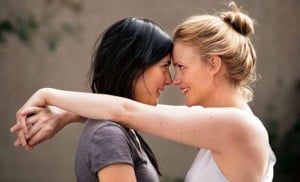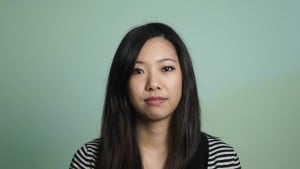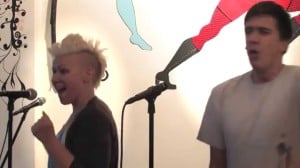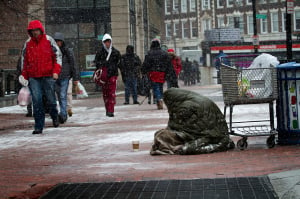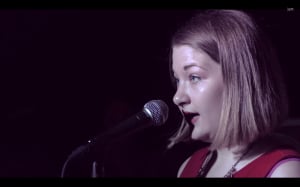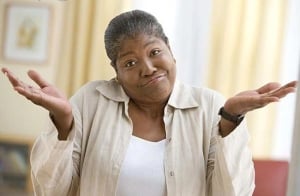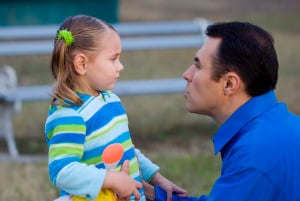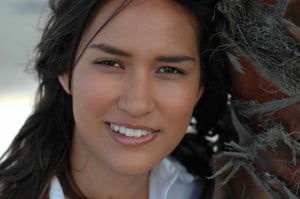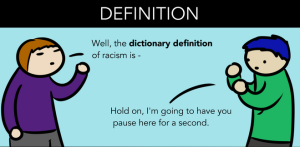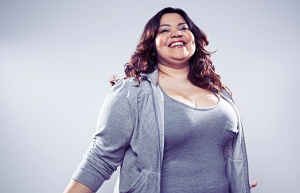Hi all. This video is part of a series for Everyday Feminism, which is a website dedicated to helping you stand up to and breakdown everyday oppression. I thought I would start by talking about oppression more generally. I think with such a hard concept, it’s good to start with an analogy.
I will be talking about an analogy that has helped me understand oppression and why people do not see oppression when it so clearly exists to the oppressed. This analogy comes from a feminist philosopher named Marilyn Frye. She wrote this in 1983. I’ll read her quote of the analogy first.
She writes, “If you look very closely at just one wire in the cage, the bird cage, you cannot see the other wires. If your conception of what is before you is determined by this myopic focus, you could look at one wire up and down the length of it and be unable to see why a bird would not just fly around the wire anytime it wanted to go somewhere. It is only when you take a step back, stop looking at the wires one-by-one microscopically, and take a macroscopic view of the whole cage that you can see why the bird does not go anywhere, and then you will see it in a moment.”
This analogy of a bird cage is supposed to help us understand why oppression is so restricting, but also so often invisible to us, because it’s not just a singular aspect of oppression, it’s not just one wire, but it’s a combination of numerously, systematically related barriers or wires in the bird cage that make the structure so restricting.
I think that it’s a good analogy because it helps us understand not only that we can’t just look at one wire or one facet of oppression and understand oppression, but also that these wires have to be related, that these wires don’t just exist on their own.
That wouldn’t be oppressive in the same way as wires which are connected in the case of a cage. What this analogy tells us about oppression is that one facet of oppression is not enough to explain the entire experience of an oppressed person. Depending on how one’s identities intersect, there may be many more wires the bird cages of some.
For instance, a trans woman of color is going to have many more wires, many more barriers and threats to her well-being based on the oppressive restrictions each of our identities in our society plays on her. She’s not only more likely to be harassed walking down the street because she’s a woman, and women endure street harassment all the time, but she’s also more vulnerable to transmisogynistic violence.
She’s also more likely to be stopped and harassed by the police based on the color of her skin. There are many facets at work here, and they all act together to place her in a oppressed, restricted space. What does this analogy tell us about feminism? What does it tell us about doing feminism? I think it tells us that we can’t just focus on micro issues. We have to look at the macro. We have to look and understand how this systematically related forces conspire together to create the harmful system which is oppression. We have to look at the bigger picture.
For example, if we focus only on marriage equality, we’ll miss the bigger systemic issues that the LGBTQ community is facing, like homelessness and suicide rates and things like that. These issues are more urgent than marriage, let’s say, but they are also only really noticeable when you approach the issue of LGBTQ issues from a wider lens that’s going to capture the struggles of many different kinds of people in that community.
It’s not just this one restriction, which I’m not saying that the restriction on marriage isn’t a bad one and it’s not that it’s not oppressive because it is one wire in the cage, let’s say, but you have to look further back and you have to look at the other wires in order to really address what’s going on for that community. Frye’s analogy teaches us that oppression is, by its very nature, multi-faceted. It’s the multitude of oppressive systems which make oppression generally such a difficult opponent for feminism.
One of the reasons why people fail to see oppression, especially oppression which does not directly affect them, is that they focus on particular harmful events or attitudes or actions, but they fail to place those incidents in the larger macro context of historical, social, and political systems. We need to change that. We have to go from understanding these things as instances of disadvantage to systems of oppression.
That’s an important step. Failing to distinguish between macro and micro oppression prevents people from accurately understanding the issue of oppression because it turns it into battles over one wire, when really we should be trying to lift the entire cage by challenging the system as a whole. I hope that that was a helpful analogy. I found it to be illuminating. I have other helpful analogies, which I would be happy to make videos for, if you are interested. Let me know. Thanks for watching. I’ll see you next time. Bye all.






